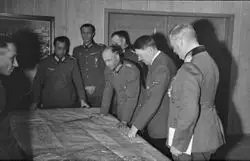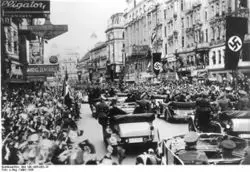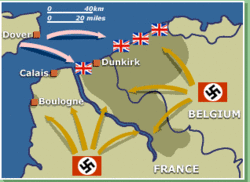How Was Hitler Responsible for the German Defeat in World War II
There were a plethora of factors that went into deciding the outcome of World War II. Political ideologies and national opinions were vastly different for the combatants, even amongst allied countries such as the United States and the Soviet Union. The industrial might of the United States was unmatched and Russia was the largest state in the world. Germany boasted brilliant generals and early in the conflict made great use of their innovative Lightning War, the Blitzkrieg.
Belligerents on each side had great strengths; however, it was the military leadership of Adolph Hitler that proved to be the greatest liability to Germany and ultimately cause its defeat. For Germany, the three greatest military mistakes made by Hitler concerned Dunkirk, Operation Barbarossa, and the Allied invasion of Normandy. The imprudent command decisions made by the Führer resulted in the Allied victory in Europe.
Prelude to War
Hitler came to power in January 1933. Two months hence, on March 23, the Enabling Act was passed through the Reichstag. This legislation essentially voided the Weimar Constitution and created a legal dictatorship, under which Hitler no longer needed approval from the Reichstag to enact any new laws. Further, on July 14, he declared that the Nazi Party was to be the only legitimately recognized party in the nation. Through a tremendous propaganda campaign, he appeared as Germany’s Messiah and established a massive following. As his popularity grew, he deemed the time appropriate for Germany to annex European lands that housed ethnically German people.[1]
He first targeted Austria. Through a series of threats on Austrian Chancellor Kurt Schluschnigg and terrorist activities by the SA, the Anschluss was completed on March 12, 1938 and Austria was officially annexed by Germany. Next on Hitler’s agenda was the Sudetenland along the Czechoslovakian border. Germany’s land grabs did not go unnoticed by formidable European powers. British Prime Minister Neville Chamberlain organized a conference in Munich that included representatives from France, Germany, and Italy. Employing a policy of appeasement, Chamberlain agreed not to interfere with Germany’s annexation of the Sudetenland if in turn, Hitler guaranteed that there would be no war. The Munich Pact was signed on September 29, 1938, after which time Chamberlain returned to England with the announcement, “There will be peace in our time.” With that piece of business complete, Hitler then turned his aims toward Poland.[2]
The German-Soviet Non-Aggression Pact was signed August 23, 1939. This agreement was a guarantee by both nations that neither would turn hostile toward the other. The “secret clause” that was incorporated into the agreement stated that Poland was to be split between the two conquering countries.[3]This strategically brilliant move by Hitler guaranteed that Germany could invade Poland without interference from the Soviet Union and, perhaps more importantly, assured Hitler that once he waged his campaign to the west, he would not have to be concerned with a two-front war. With the efficiency of the Blitzkrieg, Germany invaded Poland on September 1, 1939. Per the Non-Aggression Pact, the eastern portion of the conquered nation belonged to the Soviet Union. With the threat of an attack by Stalin eliminated, Hitler turned west.
Hitler Turns West
After the invasion of Poland, both Britain and France declared war on Germany. The French military had constructed a defensive barrier during the interwar years known as the Maginot Line; so named after the French Minister of War, Andre Maginot. This line consisted of steel and concrete forts that housed large guns, casements and pill boxes for smaller guns, and an underground network of tunnels and facilities. The line, however, was greatly flawed. Although the southern end terminated at the Swiss border, the line continued north only to the point where France, Luxembourg, and Belgium converged. Enemy penetration of the line was possible through the gap to the north.
On May 10, 1940 the German invasion of France began. After penetrating Belgium, the German Army forged its way through the Ardennes. The Allies became trapped between the German tanks of Heinz Guderian and infantry troops of Fedor von Bock. On May 23, as they retreated into western Belgium and became encircled, British commander General Lord Gort ordered his troops to fall back toward the English Channel and began rescue operations from the beaches of Dunkirk. Meanwhile, Guderian’s armor had reached the coast and turned north toward Dunkirk. On May 24, with the full support of Adolph Hitler, General Gerard von Rundstedt ordered Guderian to halt his forces just fifteen miles away from Dunkirk. Compounding this tactically atrocious decision, Hitler and von Rundstedt ordered Bock’s infantry, rather than the tanks of Guderian, to capture the troops on the beaches.

